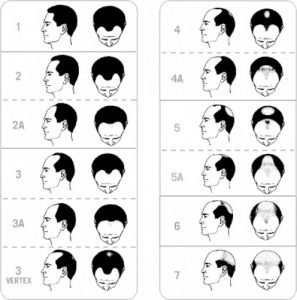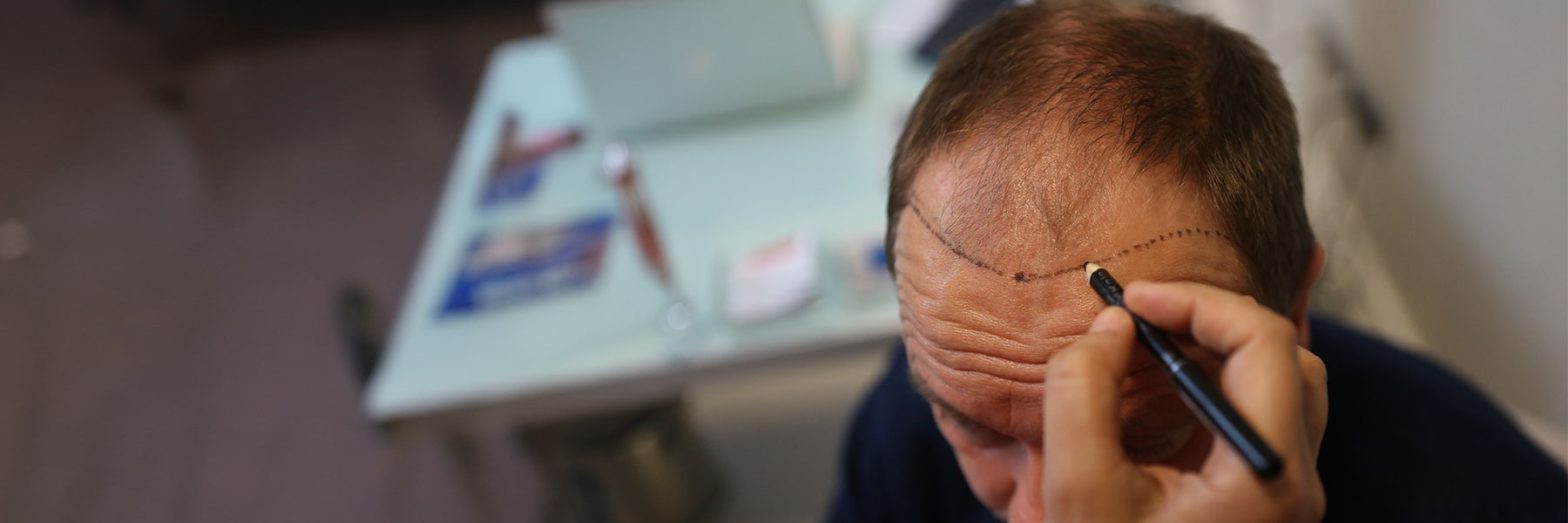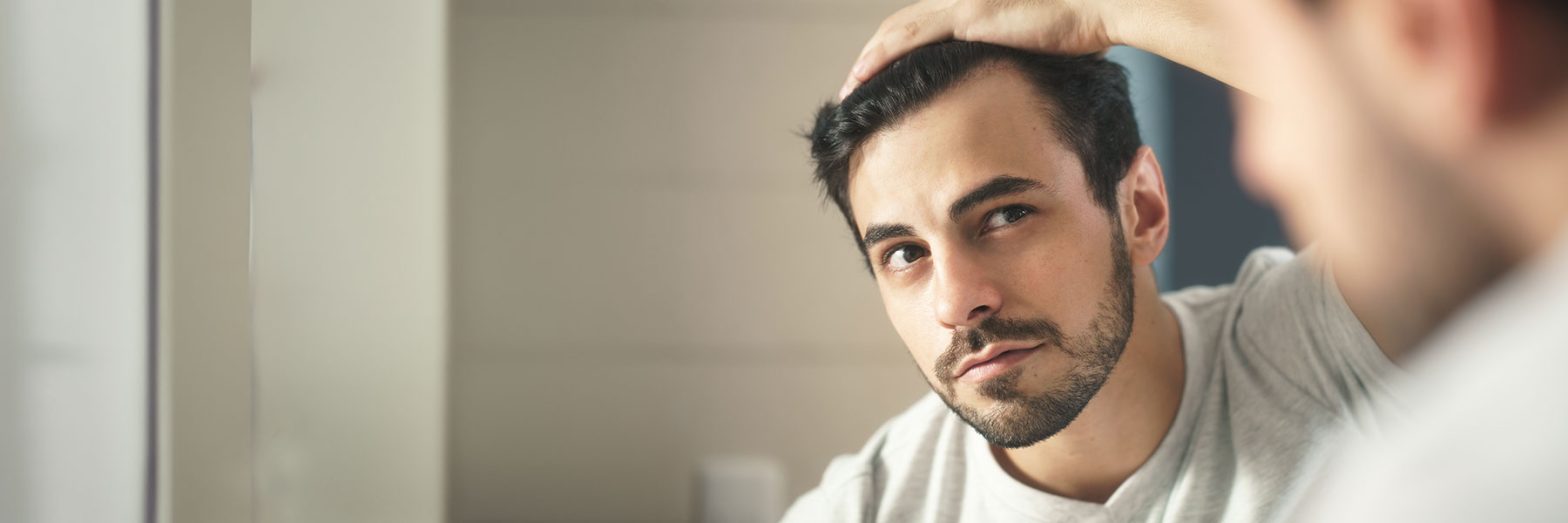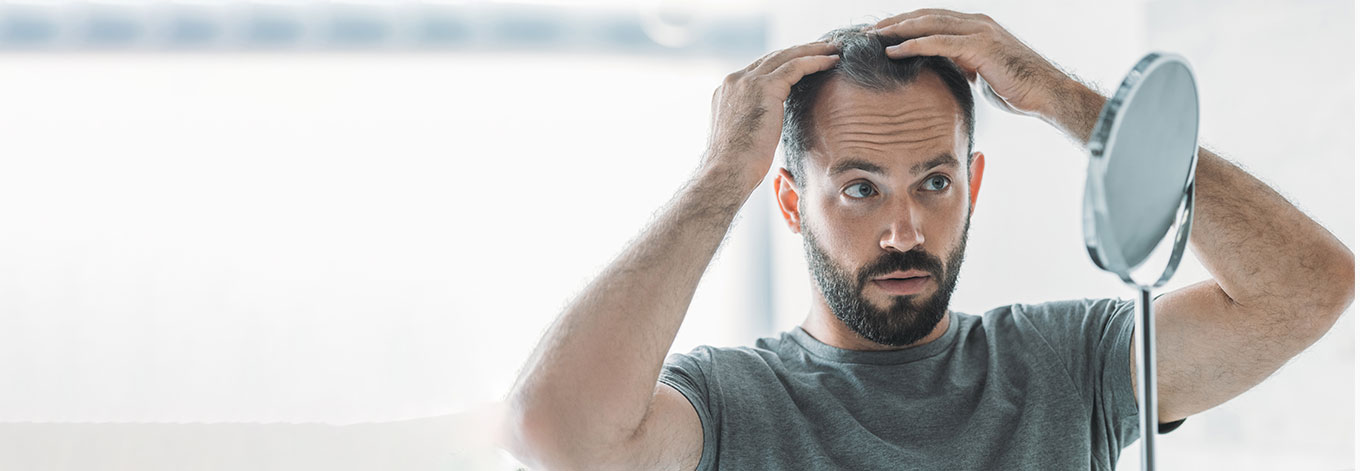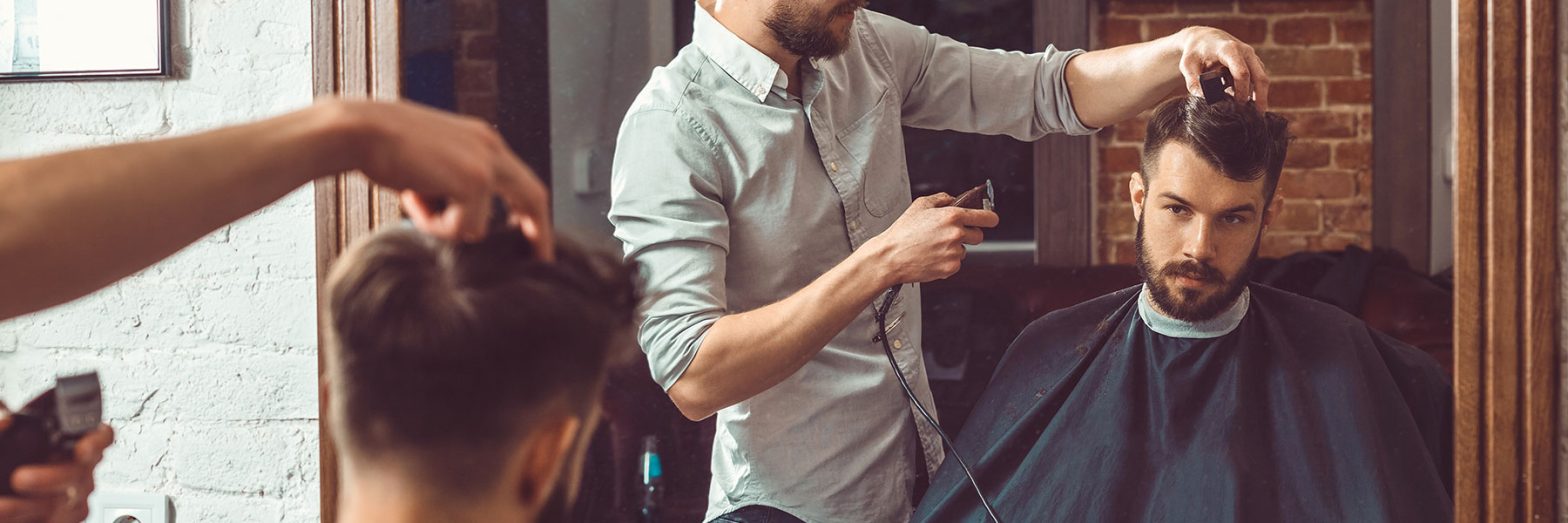
The Norwood Scale of Hair loss: How does it work
Male Pattern Baldness is responsible for 95% of all hair loss in men. The hereditary condition occurs when a hormone called DHT (dihydrotestosterone) causes healthy hair follicles to shrink and the hairs attached to them to consequently fall out.
The Norwood Scale (see image below) was designed to help understand the different stages of male pattern baldness. Of course, everyone is different and not every case can fit snugly into just one number. But, the Norwood Hamilton Scale can help you understand how far along your hair loss is and what, if anything, can be done to restore it.
How does the Norwood Scale work?
As you can see, the scale runs from 1-7. The lower numbers represent the earliest stages of hair thinning. The higher numbers best represent more advanced hair loss. The numbers have no correlation to age. Someone in their twenties can easily find themselves nearing a 6, in the same way, someone in their fifties may only just be experiencing stage 2 or 3.
Norwood Scale Stages
The Norwood scale overall has seven stages, some stages also have sub-stages.
Each stage of the Norwood Scale measures both the severity and the pattern of hair loss.
- Stage 1 – This stage shows no significant hair loss or recession of the hairline.
- Stage 2 – A slight recession of the hairline around the temples may be noticeable. However, this is also known as an adult or mature hairline so no concern should be taken here.
- Stage 3 – This is the first stage when signs of clinically significant balding are evident. The hairline will be recessed at the site of both temples. This often forms an M, U, or V shape. The receding areas are bald or very sparsely covered in hair.
- Stage 3 vertex – This is a subcategory of stage 3 where the hairline stays at Stage 2, but significant hair loss has occurred on the top of the scalp (vertex/crown).
- Stage 4 – At stage 4, a receding hairline will be more severe than in Stage 2. An area of balding will be noticeable on the top of the head (crown/vertex). These two areas of hair loss will be separated by a band of hair that runs across the frontal region, connecting the hair remaining on the sides of the scalp.
- Stage 5 – Stage 5 is when hair loss to the hairline and crown is larger than in Stage 4. They are still separated by the band of hair. But this is now narrower and sparser.
- Stage 6 – When the balding areas at the hairline and temples join with the balding area of the crown of the head you are at Stage 6. The band of hair that previously ran across the top of the head will be hardly noticeable.
- Stage 7 – The most severe stage of hair loss. At Stage 7 you will only have a band of hair running around the sides of the head remaining. This hair is usually very sparse and fine. [1]
Norwood Class A
The class A stage of the Norwood scale is not a common progression of hair loss. It differs from the more standard pattern of male pattern hair loss by receding from the hairline progressively until it reaches the back of the head. [1]
Hair loss typically begins on the front and top of the scalp. This is where the most genetically susceptible hair follicles reside. Hair loss will continue until there is a ‘horseshoe’ shape of hair left around the sides and back of the head. Unfortunately, the key factor in your likelihood of experiencing androgenic alopecia is genetics. This means there’s very little you can do to prevent the condition from occurring. The key to keeping as much of your hair as possible is speaking to a qualified expert. You should do this when you first notice signs of hair loss so you are aware of your options.
Find out more about Assessing your stage of hair loss here.
What are my hair loss treatment options?
Every single person’s experience of hair loss is different. That means treatment can never be a one-size-fits-all job. It’s important to take note of your hair’s rate of change as much as the amount you’ve lost. This is so you can understand what, if anything, can be done.
For men in the earliest stages of hair thinning, or those under the age of 25 (when hair loss is not yet completely stable), we’d normally advise meeting with a hair loss expert in the first instance.
Hair Loss Specialist Appointment
Our experts will be able to assess your hair loss to identify the cause. If male pattern baldness is confirmed, they will look at your pattern of hair loss and see if there is any way to prevent it from developing through medication. They can also recommend treatments such as non-surgical hair loss treatment, Calecim and mesotherapy. They can also refer you, when necessary, for further consultation and diagnosis.
FUE Hair Transplant
If you’re looking to restore hair where it has already been permanently lost. The only possible treatment is a hair transplant. This is normally only recommended for men over the age of 25. There is no upper age limit for the treatment, providing that your donor hair follicles are healthy and usable.
At The Private Clinic, we work exclusively with the Follicular Unit Extraction (FUE) technique. This involves the extraction and transplantation of individual follicles one by one. Hairs are usually taken from the back and sides of the head. This is because they are not affected by the hair-reducing hormone, meaning that once transplanted they should not be lost.
FUE Hair Transplants are much less invasive than the traditional ‘strip’ method. The technique involves no linear scarring at the back of the head. Meeting with a surgeon is the only real way to ascertain your suitability. We will never perform a treatment on anyone that we don’t think will have success.
Find out more about what is involved in an FUE Hair Transplant here.
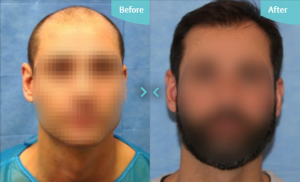
Do I need Hair Loss Treatment?
There are no health defects from Male Pattern Baldness. It is not an illness and it won’t affect your body in any way apart from a hair reduction. It is a personal decision if you decide to seek Hair Transplant Surgery, Hair Loss treatments or Hair Loss Medication.
The biggest reason why men seek hair loss treatment is when their confidence drops alongside their hair. There are a variety of options that may help. Speaking to hair loss experts and doctors can help you understand your individual experience of hair loss. They can help recommend the best method to get you feeling yourself again. For information on a range of hair restoration treatments, get in touch.
Hair Loss at The Private Clinic
At The Private Clinic, we play host to several experts as well as Hair Transplant surgeons, to offer complete hair solutions to our patients.
- We are the UK’s leading non-invasive cosmetic group and have some of the most experienced doctors and nurses in the country working with us. For over 40 years we have successfully treated thousands of patients.
- State of the art medical facilities, all registered by the CQC (Care Quality Commission).
- You will be treated by highly experienced Hair Loss Experts or Hair Transplant surgeons
- By coming to us for hair loss advice you can rest assured you are in the best possible hands
- We offer a 24-hour patient helpline following treatment
- When it comes to non-surgical treatments we always strive to give you little to no downtime, so you can get back to enjoying life.
- We afford all our patients the right care before, during and after every treatment.
- We have clinics in London Harley Street, Birmingham, and Northampton.
- See our female hair loss before and after results photo gallery
- Find out more information in our hair loss blogs
For more information on Hair Thinning and Hair Loss, click here.
Hair Transplants at The Private Clinic
The Private Clinic of Harley Street offers the latest and most advanced FUE Hair Transplant procedures available, including hair transplants to the face and eyebrows. Hair Transplants are the only permanent hair loss solution.
- You will be treated by highly experienced Doctors. Our Hair Transplant surgeons are specialised in FUE (Follicular Unit Extraction) and treat hundreds of patients every year.
- FUE is a minimally invasive treatment(meaning there is no cutting of a strip), and carried out under local anaesthetic – many patients either watch TV, or even fall asleep during the procedure.
- Unlike the Strip (FUT) procedure, you won’t require any stitches after your treatment. This means that the recovery time is also reduced when compared to the Strip surgery.
- We use the finest instruments, resulting in as minimal trauma to your scalp as possible.
- Thanks to our advanced skills and techniques, our team ensure that the donor area looks intact after the hair transplant procedure and you can keep your hair really short if you prefer without any obvious scarring.
- We work by hair, not per graft – this ensures that only the strongest, healthiest follicles are selected for your transplant procedure.
- Your results will look natural, with denser packing – the hair is implanted in the direction that matches your hair growth, and because we select healthy follicles, the treated area will look densely filled.
- Our surgeons also offer the Unshaven Hair Transplant (U-FUE) to those who prefer not to shave beforehand. At your consultation, we will be able to advise you on whether an unshaven procedure is suitable for you.
- Scars resulting from injuries or previous surgeries can also be corrected with our FUE for Scar Repair procedure.
- You are entitled to as many post-operative care and appointments with your Hair Transplant surgeon and the nursing team as required.
Useful links
- See our FUE hair transplant before and after results photo gallery
- Read our extensive hair transplant FAQs
- Hear from previous Hair Transplant patients in our patient stories and videos
- Find out more information in our hair transplant blogs
Expert Hair Transplant Surgeons at The Private Clinic
- Mr Michael Mouzakis, MD, MSc. GMC Number: 7237640
- Dr Luca de Fazio, MD, BSc, Msc. GMC Number: 7095123
To find out more about Hair Loss treatments at The Private Clinic please call 0333 920 2471 or use our hair loss online contact form





